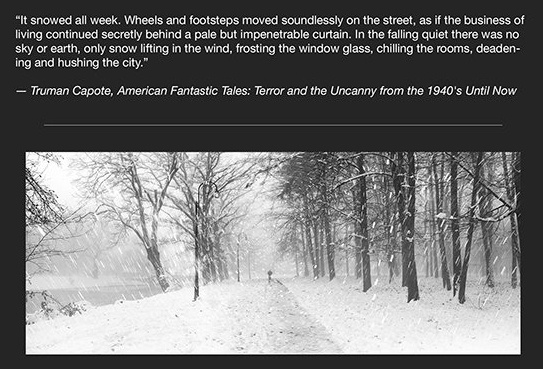 Stories are part of our DNA. From our earliest ancestors sharing stories over a fire to today’s proliferation of videos throughout the web, stories keep us entertained, informed, and connected.
Stories are part of our DNA. From our earliest ancestors sharing stories over a fire to today’s proliferation of videos throughout the web, stories keep us entertained, informed, and connected.
As a lifelong bookworm, I know firsthand the power of stories to heal, to protect, and to expand a person’s experience. As a marketer, I am convinced that great marketing tells engaging stories that connect people to brands, and vice versa.
In 2018, those stories are told visually—through photos, gifs, and videos. Now more than ever, brands must engage their audiences through visual storytelling, or quickly lose ground.
Here are three things to remember when crafting your brand’s story.
1. Show, Don’t Tell
Brands must engage their audiences through visual storytelling, or quickly lose ground
Words are a thing of beauty. But, grasping meaning from the written word is a slower process than doing so from an image. Your brain grabs images first, assigning them meaning via emotion. Truman Capote’s words below are haunting. He was a master storyteller and one of my favorite authors. The picture below, however, quickly conveys the same sense of vastness and quiet that accompanies a snow storm. That image alone not only speaks volumes, it also acts as the “hook,” the attention grabber, which draws you in for more.
The best situation, of course, is for your content to combine the most engaging images with the most engaging copy.

2. Conflict Engages
A great story includes conflict. Wondering if the protagonists of a story will resolve this conflict is what keeps the audience riveted to their screens, forgetting they were intending on swiping left. Conflict can be interpersonal, human against nature, or human against machine.
When I first saw the Volvo commercial featuring Jean-Claude Van Damme doing a split while riding two reversing trucks, I couldn’t stop thinking, “Is he going to fall?” The tension, despite the very calming music in the commercial, was almost too much to bear. In seventy-six seconds, I felt the same range of emotions that an entire film can elicit: fear, joy, relief. An entire narrative in just over a minute.
It’s also important to incorporate this idea of “narrative” into the buyer’s journey. Conflict kicks off the story, when your hero (the buyer) becomes aware of a problem she must solve. She starts contemplating options, seeking the best way to resolve the problem. Ultimately, she arrives at a decision—which typically requires sales to get involved in the story. As marketers, it’s imperative to help sales teams continue a plot that began in a marketing setting.
3. People Relate to People, not Brands
Triumph over adversity is infinitely more relatable than a list of product features
Stories featuring triumph over adversity or interpersonal connections are infinitely more relatable than a list of product features. Nike’s “Just Do It” features athletes, not products. Dove’s “Real Beauty” speaks to societal pressures put upon women to conform to narrow standards of beauty. And Ford’s most recent Labor Day TV commercial, 'Who is the Hardest-Working Person You Know?', honors blue-collar workers through the lens of their loved ones.
This personal connection also brings in an element of trust. Seeing women in the Dove campaign who represent people you encounter every day versus those walking a runway solidifies one’s trust in that brand to be honest; to “tell it like it is.”
When creating your next marketing campaign, think about your customers as people. What matters to them? How can you connect with them? What about your brand is relatable? What about your brand is trustworthy?
Then, how can you tell a story that keeps them engaged?








